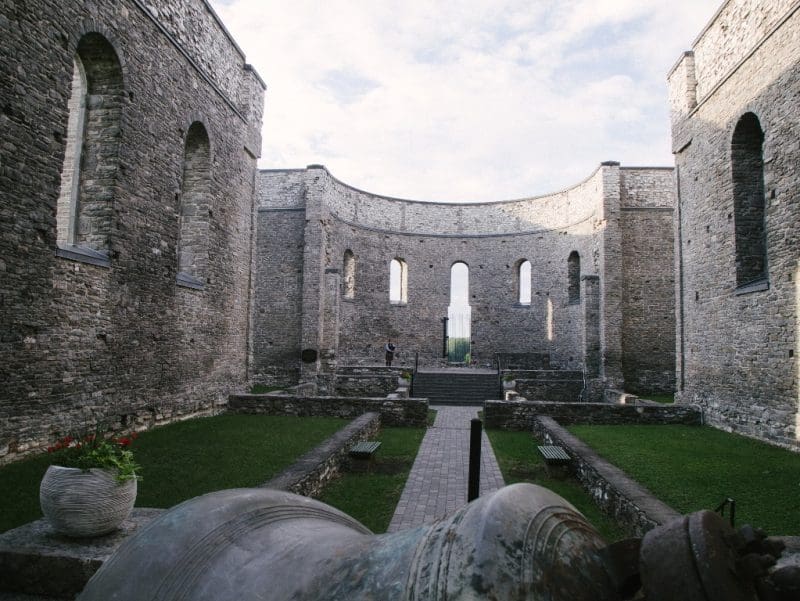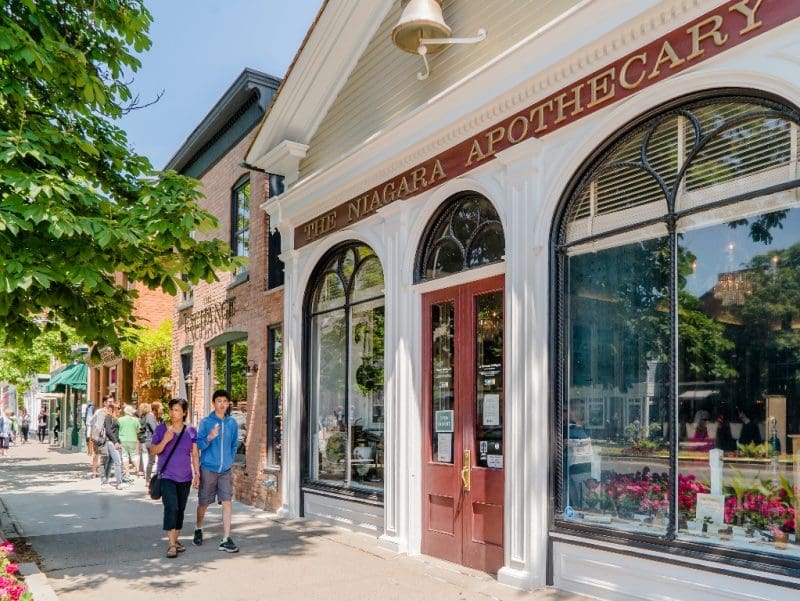Heritage tourism showcases the past
IAN STALKER
Ontario Heritage Trust is inviting people to step back in time without stepping out of Ontario.
The association is promoting heritage tourism, described as any travel experience that has people explore historical buildings or places.
“It’s a way for the public to learn about their local history and celebrate local identity, traditions and more,” says David Leonard, a program development specialist with Ontario Heritage Trust. “There are many ways people can connect with heritage tourism. They can interact with artifacts at a museum, participate in walking tours or demonstrations or visit a historical landmark. Many historical buildings are intriguing and inspiring places – some have been maintained from a period long ago and others have gone through the adaptive reuse process to house a new, modern business or community space, places like the Brickhouse Brewpub in Oxford County or The Cotton Factory in Hamilton. Heritage tourism is part of the larger tourism umbrella. By engaging in heritage tourism, you’re likely also going to a coffee shop, restaurant and/or small business in that area that supports local tourism. They’re all connected.”
Leonard concedes that when people hear the term heritage tourism, they tend to think about the likes of Europe, which draws people in search of such historic landmarks as the Colosseum. But he adds that that doesn’t have to be the case.

“This can also lead to a misconception that you’re only a tourist if you’re travelling internationally, but we know that isn’t true,” Leonard states. “Every time you leave home to go on a trip to a neighbouring town or region, you technically become a tourist. You can even be a tourist in your own town by visiting a heritage site or museum. We need to reframe tourism as something that can be done locally as well as internationally.”
Leonard says Ontario is filled with heritage attractions, as are other provinces.
“We have so many fascinating places — whether architectural, cultural or natural — that tell the stories of our past,” he continues. “Doors Open Ontario, an Ontario Heritage Trust program, typically has over 500 sites to visit each year that help fuel the heritage tourism sector. The program illustrates the wealth of heritage that you can discover in your own backyard. This year’s program, which started in April and runs until October, is spread over 15 weekends with 22 in-person events. The program, which is always free, provides rare access to spaces normally closed to the public or that charge admission.
“Doors Open Ontario allows people to explore Ontario’s heritage in so many ways. You could visit a historical house like Carman House in Cornwall, a place like the Lorne Scots Regimental Museum in Brampton, a natural site like the Dutton Dunwich Conservation Area, architectural or engineering wonders like R.C. Harris in Toronto (a regular of Doors Open Toronto) or the Peterborough Lift Lock National Historic Site, and so much more.
“Doors Open Ontario also includes sites that have been adaptively reused. Adaptive reuse sites place guests in the middle of history, giving them a chance to immerse themselves in the past while also interacting with modern-day activities. Some examples include Broken Rail Brewing (formerly Junction Station) in St. Marys or the Idea Exchange, Old Post Office in Waterloo Region. This year, many Doors Open Ontario events will explore the province’s culinary and agricultural heritage as well. You can visit a maple farm during Doors Open Simcoe County, an urban farm during Doors Open London and learn about ecological restoration in the area or visit one of Canada’s oldest family-run grocers during Doors Open Waterloo Region.”

Leonard says the number of people embracing heritage tourism is on the upswing, adding the pandemic prompted many to stay close to home due to travel restrictions, leading them to discover interesting sites on their doorsteps.
“We’re also at an interesting point in history where many people are looking to learn and share their local stories while celebrating the diversity of their region,” Leonard adds. “Over the past few years, important conversations about history have been happening and many people are now searching for stories of BIPOC, 2SLGBTQ+ and economically disenfranchised peoples. These stories were either overlooked or intentionally omitted in the past. The trust acknowledges this error and has been working with communities across the province to share their own stories in their own voices, to celebrate the diversity of experiences,languages, customs and perspectives of different people and different places.
“Some sites that belong to Ontario’s diverse faith traditions, such as the London Muslim Mosque, regularly participate in Doors Open Ontario. Sites that relate to Ontario’s Indigenous identities and history are a major area of growth focus for the program, such as the indigenous design studio at Brook McIlroy Architects in Toronto.
“In 2023, we’re even seeing record-breaking attendance numbers at sites. This year, the Elgin and Winter Garden Theatre Centre in Toronto saw over 7,000 people visit in one day during their participation in Doors Open Toronto. The trust’s George Brown House also saw 2,900 visits during the same event.”
Leonard says Ontario residents are “spoiled for choice,” with the province home to numerous intfiguing museums and historical sites, among them the Josiah Henson Museum of African-Canadian History, the Laura Secord Homestead and Sainte- Marie among the Hurons, to natural wonders like the Cheltenham Badlands in Caledon or Kakabeka Falls near Thunder Bay.

“Many towns and cities, too, have historical districts that give you a sense of the past — such as Galt in Cambridge and downtown St. Marys,” Leonard adds.
Throughout the Doors Open Ontario season, visitors can experience different types of heritage with national or regional significance for free, an opportunity to get to know the province. Community museums, local landmarks and guided tours are among participants.
Leonard says that data says that heritage tourism is becoming a more significant tourism driver in Ontario, and museums and historical sites are recognized as a major tourism driver by Destination Ontario, which leads tourism marketing and development for the province.
Doors Open Ontario is promoted as an effective way for communities to leverage interest in their heritage to create additional tourism spending. Since Doors
Doors Open Ontario started in 2002, and the program has generated over $140 million in economic activity and over 9 million Ontarians have visited a Doors Open Ontario site. Nearly 93% of communities in the province have taken part at some point since that time. In 2022, the overall economic impact of Doors Open Ontario was $6 million, which supported Ontario’s COVID-19 recovery at a critical time when communities were reopening after long pandemic closures.
Doors Open Ontario runs every April to October. This year, there are 14 events remaining, such as Cornwall and SDG Counties (Aug. 19-20), Belleville (Sept. 9), London (Sept. 16-17), Waterloo Region (Sept. 16), Niagara-on-the-Lake (Oct. 21) and more.
Dates, times and participating sites can be found on the Doors Open Ontario website. People can also visit Digital Doors Open Ontario, which allows them to explore Ontario history at any time with nearly 300 sites that offer unique and exclusive digital experiences.

















